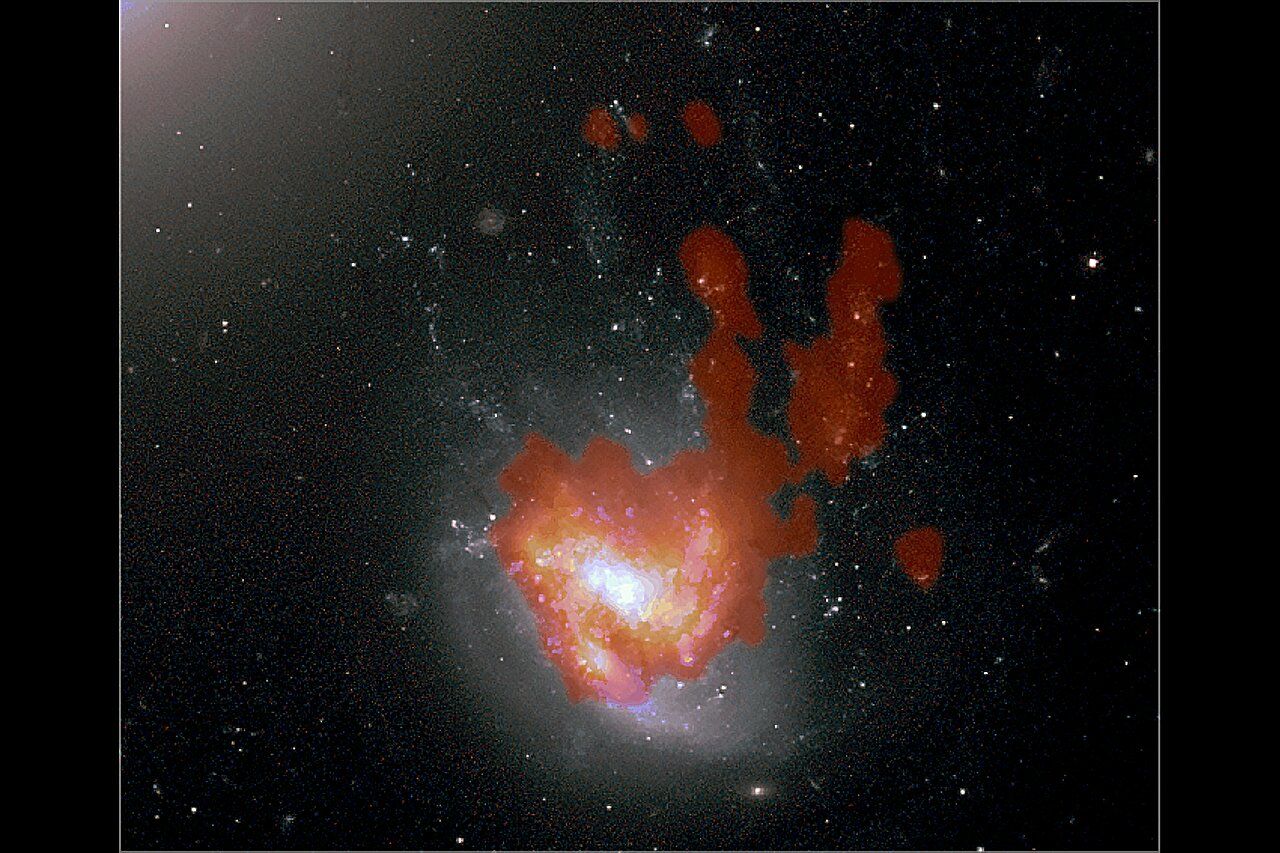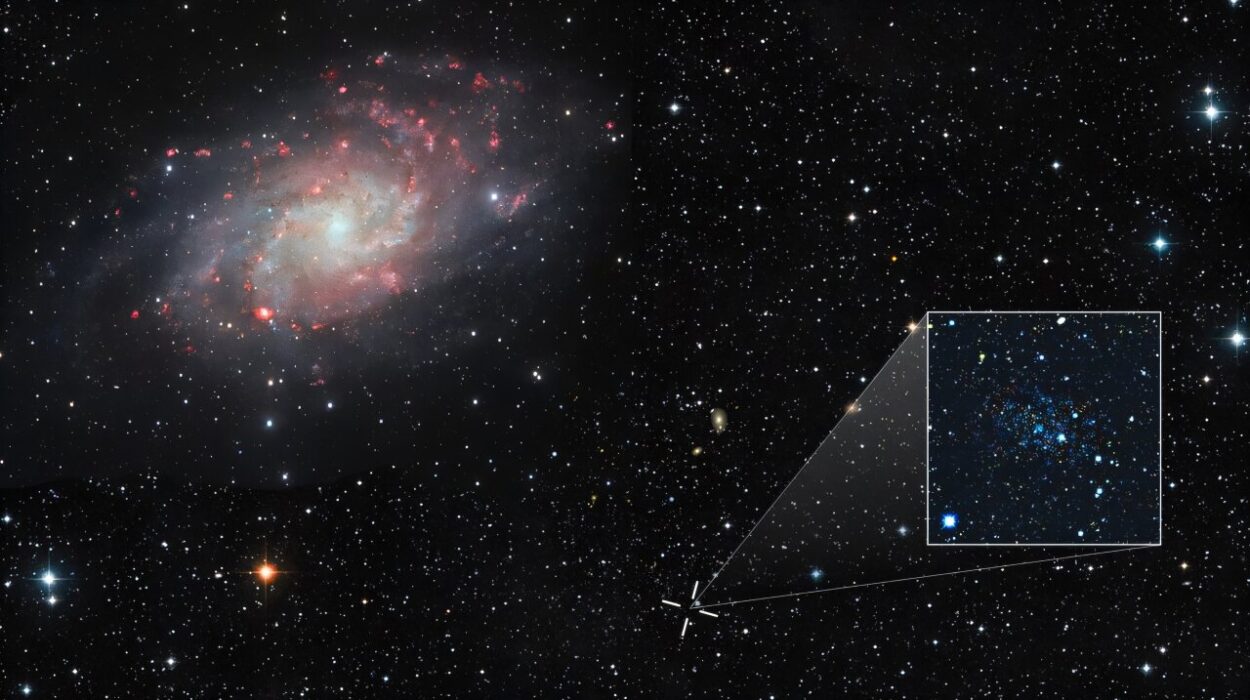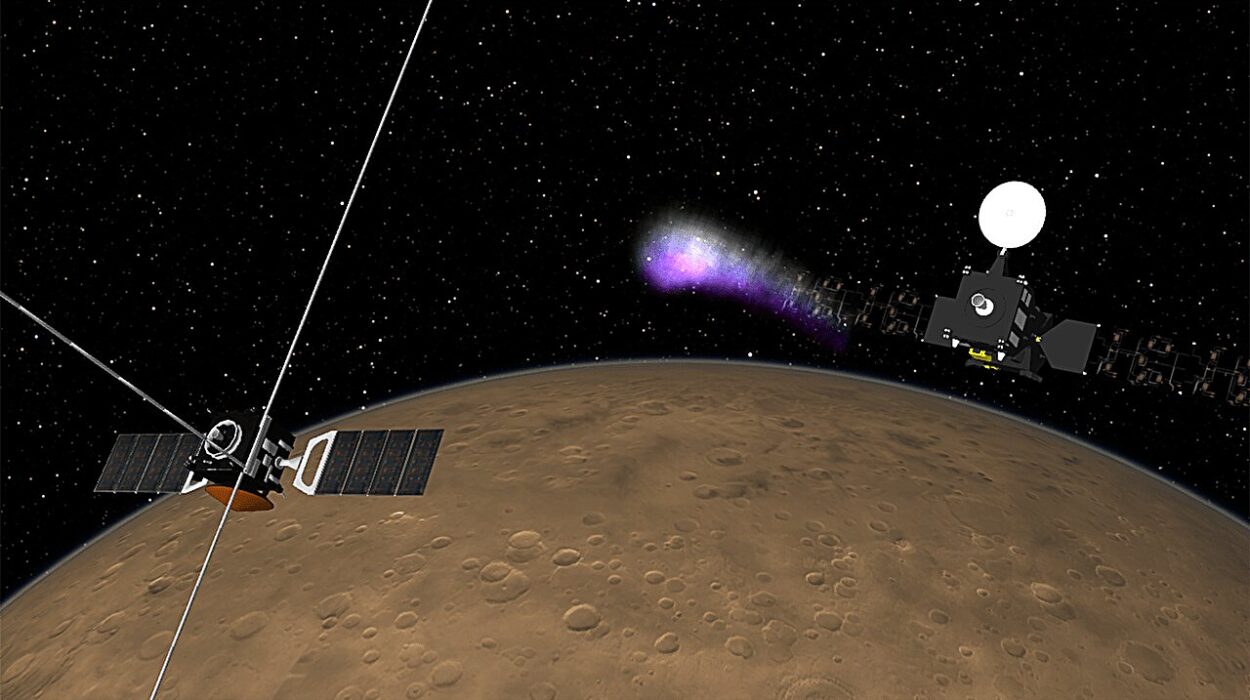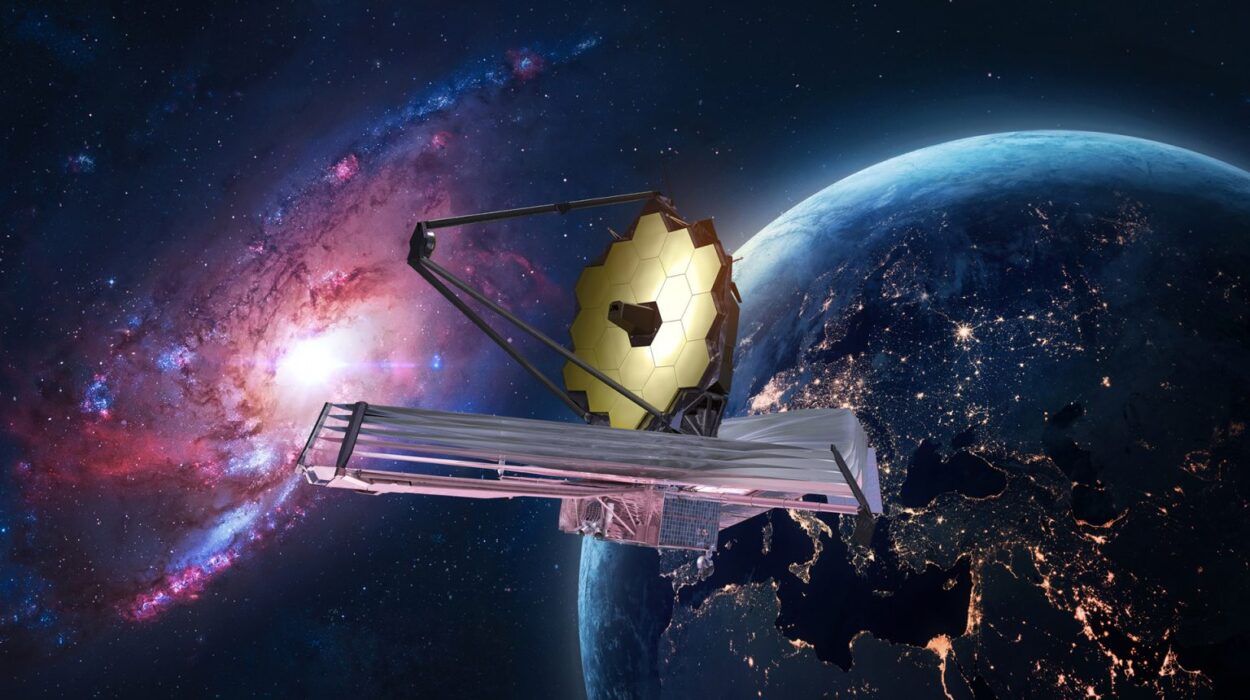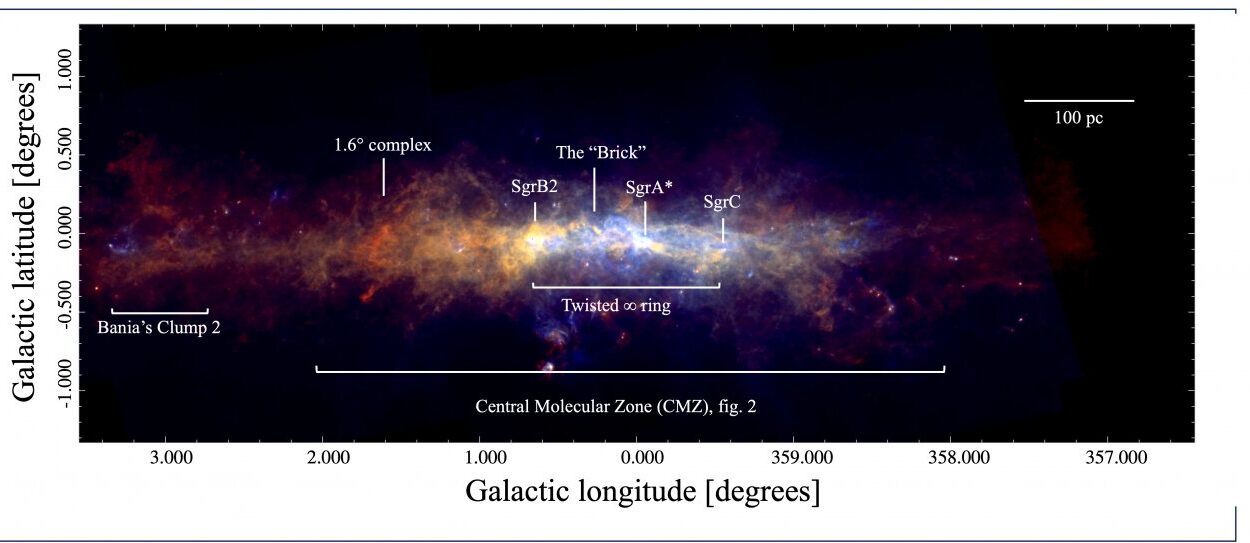In the vast darkness more than 300 million light-years away, a galaxy is being reshaped by invisible forces as powerful as they are beautiful. It drifts like a jellyfish through a stormy sea of dark matter and scorching gas, leaving behind glowing tendrils and a shimmering trail of stars. But this is no ordinary jellyfish—it’s NGC 4858, and it’s teaching astronomers something new about how galaxies live, evolve, and sometimes fall apart.
“This galaxy is effectively in a wind tunnel,” says Harrison Souchereau, a Yale doctoral student and lead author of a striking new study. “Its gas is being ripped away by the pressure of its environment.” The environment in question is the Coma Cluster, a cosmic metropolis packed with thousands of galaxies, smothered in superheated gas, and stitched together by dark matter. It’s one of the most extreme places in the known universe—and NGC 4858 is right in the thick of it.
What Is a Jellyfish Galaxy?
Jellyfish galaxies are a class of objects that almost defy belief. They’re shaped—quite literally—like drifting sea creatures. Long, luminous tails of gas and newborn stars trail behind them like tentacles, giving the galaxies their nickname. These features don’t emerge by accident. They’re the result of a brutal cosmic process called ram pressure stripping, in which galaxies speed through the dense plasma of galaxy clusters and get their gas—fuel for future stars—ripped away by a kind of galactic headwind.
In other words, NGC 4858 is a galaxy being stripped bare.
The phenomenon is both violent and strangely graceful, as evidenced by the elegant spiral patterns and glowing trails left in the galaxy’s wake. But for astronomers, the process is more than just spectacle—it’s a scientific goldmine. And NGC 4858, it turns out, may be one of the best examples ever seen.
Bunny Ears and Fountains in the Void
When Souchereau and Yale astronomy professor Jeffrey Kenney looked at high-resolution images of NGC 4858 using data from the powerful ALMA (Atacama Large Millimeter/submillimeter Array) radio telescope, they were expecting jellyfish-like features. What they didn’t expect were bunny ears.
That’s what the researchers are calling a pair of distorted spiral arms within the galaxy that rise up from the disk in a shape reminiscent of rabbit ears. These structures, they believe, are the result of a delicate tug-of-war between the force of the galaxy’s rotation and the pressure of the galactic wind slamming into it.
“It’s a beautiful example of how internal dynamics and external forces collide in space,” Souchereau said.
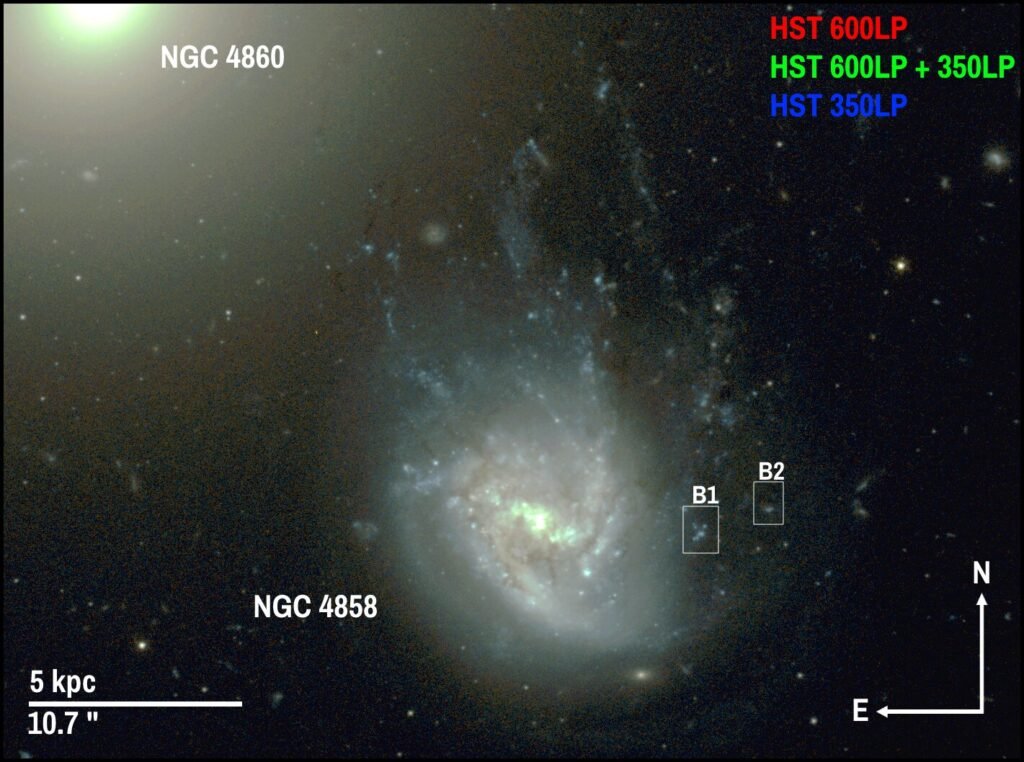
Even more astonishing was what they found trailing behind the main disk of the galaxy: a phenomenon known as fallback.
Ram pressure stripping usually takes gas away from galaxies. But in NGC 4858, some of that displaced gas doesn’t quite reach escape velocity. Instead, it loops back and rains down on the galaxy like a kind of celestial fountain. The team captured perhaps the clearest view yet of this fallback effect—something that has been theorized and occasionally glimpsed in other galaxies, but never documented with such clarity.
“When gas falls back like this, it often pools into spiral arms on just one side of the inner tail,” Kenney explained. “It’s like watching part of the galaxy reclaim what was nearly lost.”
The Cosmic Laboratory of the Coma Cluster
NGC 4858’s dramatic evolution is happening inside the Coma Cluster, one of the most massive known galaxy clusters in the universe. It’s a cosmic pressure cooker, filled with superheated plasma and gravitational mayhem. Galaxies careening through the cluster’s dense medium experience immense pressure—like driving a convertible through a hurricane.
To understand NGC 4858’s transformation, the researchers drew on more than just ALMA. They layered in data from the Subaru Telescope in Hawaii, the NASA/ESA Hubble Space Telescope, and the Hubble Legacy Archive to build a multi-dimensional view of the galaxy’s structure and movement.
The result is a deeply textured portrait of a galaxy in mid-transformation, offering scientists a kind of real-time case study of how galactic environments shape galactic destinies.
Why This Galaxy Matters
Beyond its striking visuals and poetic nickname, NGC 4858 serves as a critical testbed for some of astrophysics’ biggest questions. How do galaxies lose their ability to form stars? What happens to their internal structure when they’re exposed to extreme external forces? How common are galactic fountains, and what role do they play in cosmic recycling?
“Most people think of ram pressure stripping as something that just removes gas and ends star formation,” said Kenney. “But this fallback process complicates the story. It shows us that some material doesn’t get lost—it comes back. That changes how we think about galaxy evolution.”
The findings could help astronomers understand why some galaxies stop forming stars earlier than others and shed light on how galaxies in clusters differ from their more isolated cousins.
A Collaborative Cosmic Effort
The study, presented this week at the American Astronomical Society’s summer meeting, is the work of an international team spanning more than a dozen countries—including scientists from the Czech Republic, Japan, France, the UK, Australia, Estonia, Italy, China, Portugal, and the United States. It exemplifies the deeply collaborative nature of modern astronomy, where data from multiple observatories, instruments, and continents are synthesized into discoveries that push the frontiers of human knowledge.
The paper is currently available on the arXiv preprint server, where astronomers often share their findings ahead of formal peer-reviewed publication.
A Living Galaxy on the Edge
Galaxies are often thought of as static, timeless pinwheels of stars frozen in the void. But NGC 4858 is a reminder that galaxies are alive—dynamic, changeable, and sometimes under siege. They rotate. They erupt. They bleed. And sometimes, they fight to hold on to what’s theirs.
From the bizarre bunny-ear spirals to the elegant arc of its fallback tail, NGC 4858 is telling a story billions of years in the making—one of motion, struggle, and unexpected resilience.
It may be light-years away, but in the delicate swirl of its distorted spiral arms, we see echoes of the same forces that shaped our own Milky Way.
And for a brief moment, we’re allowed to witness the drama of a galaxy caught in the wind.
Reference: Harrison J. Souchereau et al, ALMA-JELLY I: High Resolution CO(2-1) Observations of Ongoing Ram Pressure Stripping in NGC 4858 Reveal Asymmetrical Gas Tail Formation and Fallback, arXiv (2025). DOI: 10.48550/arxiv.2506.07262
